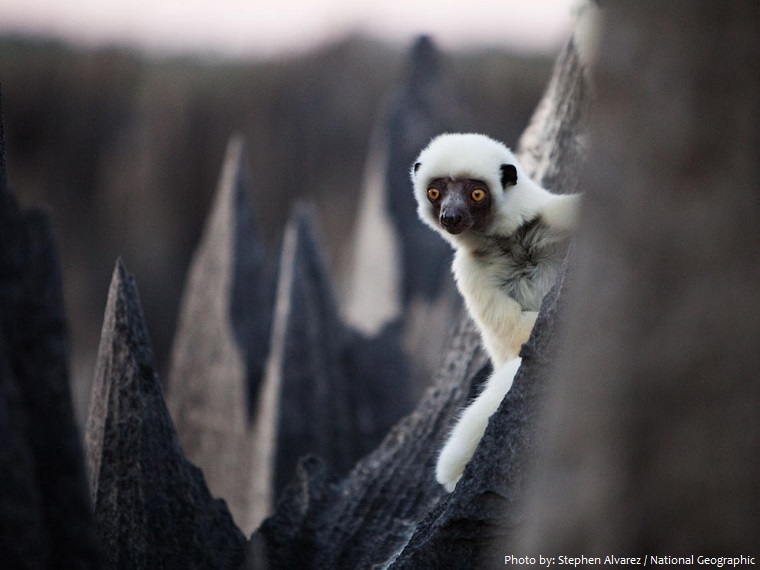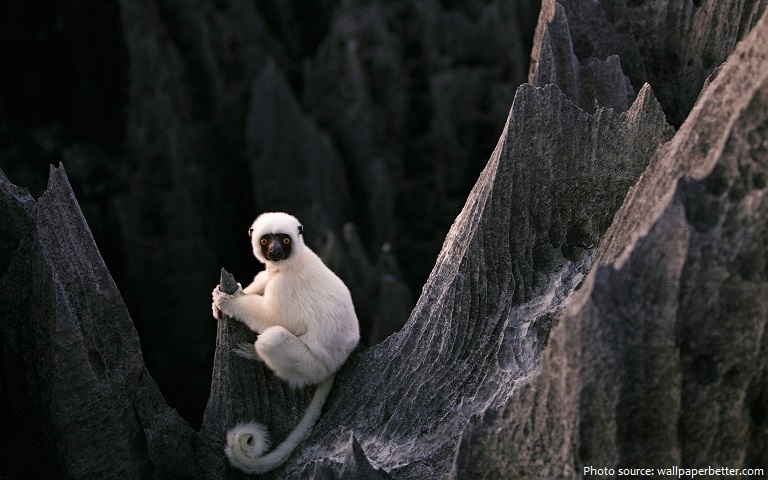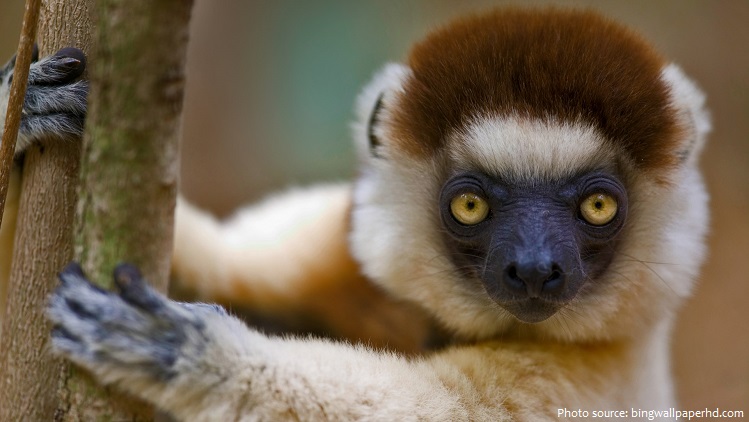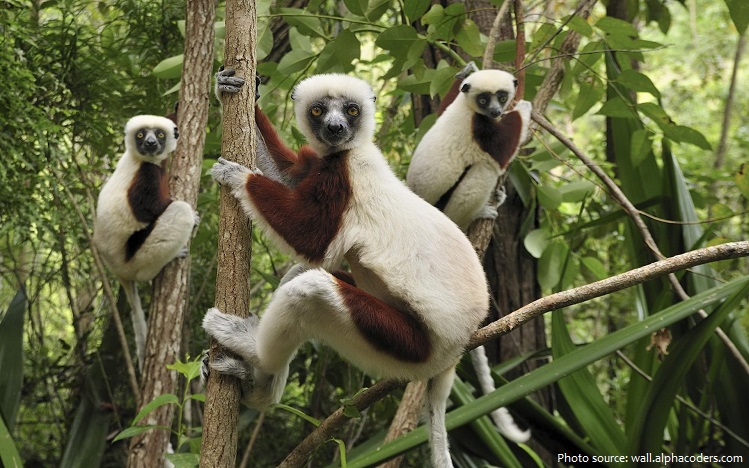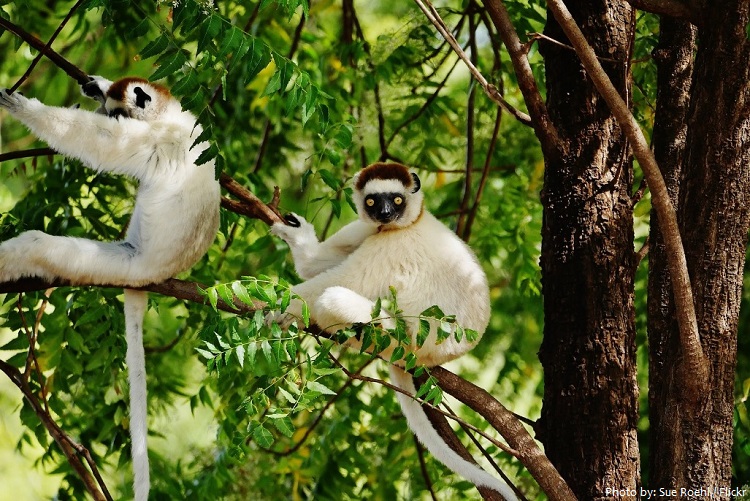Sifakas are lemurs.
There are 9 species of sifkas.
Like all lemurs, they are found only on the island of Madagascar.
The lifespan of the sifakas is up to 20 years.
Sifakas are about 1 metre (3.3 feet) long, roughly half the length being tail.
They have a small head, large eyes, and large ears that in most species are partially hidden in their long silky fur.
Color varies both within and between species but is usually white with darker markings.
Sifakas move by vertical clinging and leaping, meaning they maintain an upright position leaping from tree trunk to tree trunk and moving along branches. They are skillful climbers and powerful jumpers, able to make leaps up to 10 m (32.8 ft) from one tree to the next. On the ground, they move bipedally, with sideways hopping movements of the hind legs, holding their fore limbs up for balance.
Sifakas are diurnal creatures meaning they are active during the day.
They are arboreal, meaning they live mostly in trees.
Sifakas are herbivores, eating leaves, flowers, and fruits. In the wet season, it eats immature leaves, flowers, fruit, bark, and dead wood. In the dry season, it eats mature leaves and buds.
When not searching for food, they spend a good part of the day sunbathing, stretched on the branches.
Sifakas live in small, social groups of males and females numbering 3 to 10 individuals of varying ages. Aside from mothers and their offspring, group members are not necessarily related to one another and female sifakas are dominant over males.
Though their home range may overlap with other groups of sifakas, they avoid each other to avoid aggression.
A group of sifakas moves about one-half mile (0.8 kilometer) a day and covers its entire home range in 10 to 20 days.
Sifakas, like many other lemurs, have modified lower incisors specialized for grooming. Tall, slender, and evenly spaced, these teeth help to comb and clean the hair. Resting individuals are commonly seen licking and combing one another’s hair.
Group members huddle together on cold nights. Individuals sit single-file along a branch, to help retain heat. Some have described the sight as appearing similar to people on a toboggan.
A four- to five-month gestation period ends with the birth of a single offspring in July. The young holds fast to the mother’s belly when small, but then later is carried on her back. Young are weaned after about six months and reach full maturity at the age of two to three years.
Predators of the sifaka include the fossa, a puma-like mammal native to Madagascar, and aerial hunters such as hawks. The sifaka usually avoids these attacks with its agile acrobatics through the trees high above the ground. However, they have been known to attack by biting and scratching and have even been witnessed fighting off a Madagascar ground boa.
All species of sifakas are threatened, ranging from vulnerable to critically endangered.
The name “sifaka”, a Malagasy word, comes from its distinct call as it travels through the treetops: “shi-fakh.”
The “shi-fakh” call is used to warn fellow group members of a potential ground predator or to threaten enemies and intruders.
In Malagasy culture, sifakas are often viewed as “sacred sun worshippers.” This traditional view very likely stems from the animals’ curious habit of basking in the sun.
